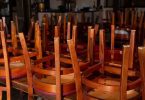Australia drives regional wines
Dublin had a visit lately from Chris Royle, winemaker at Voyager Estate on Australia’s Margaret River. and although it’s since been joined by some serious competition, it still makes its presence felt with new and interesting labels. Voyager Estate isn’t new but it does have a young, engergetic winemaking team and Chris Royle waded in bravely to show several of his neighbours’ products alongside Voyager’s own wines.
"We probably have a unique climatic mix among wine growing areas," says Royle, "With lots of coastal strips and surf breaks, moderating sea breezes, a very long summer and autumn with lots of sunshine late into the ripening season. Some vineyards on very flat land can produce rather four square wines suitable for early drinking but we have lots of gentle sloping exposures and some granitic soils and gravel which give us some really fine wines."
Three blends of sauvignon blanc/semillon kicked off the tasting. Of these, Voyager 2008 showed sauvignon dominant on the palate, with lingering green fruit flavours, while Xanadu had more pronounced semillon character on nose and palate, and some nutty yellow fruit leading to a fresh finish.
A move to three chardonnays had you instantly wondering what all those "anything but chardonnay" pundits are going on about. Sauvignon blanc is a pretty grape certainly, with lots of zesty, youthful appeal, but one can tire of all those gooseberries. Chardonnay is where much serious white wine business has always been and wines like these Margaret River examples remind you of just why this is.
Voyager 2006 had creamy citrus fruit just beginning to evolve, underpinned by firm concentration and fine acidity to promise interesting life ahead. Clairault 2005 was the more Burgundian in style, at least at this stage of its development, with dry lemon, subtle toast and a hint of beeswax creating a deliciously complex wine, drinking beautifully now.
Of the reds, my favourite was Voyager’s Shiraz 2006. It had slight softness, suggesting early to medium term drinking but it had true classic French syrah flavours of black olive, dry plum and subtle, smoky savouriness. At €27 retail, this would make a lovely gift wine. Stella Bella 2005 was more New World in character, with toasty plum flavours zipping across the palate; more of an easy drinker than the Voyager, it would be an enjoyable wine with chicken or turkey.
There was a huge difference in character between these two wines; who says Australia doesn’t offer diversity?
All of the cabernets, to this drinker at least, had a certain underripe quality. That didn’t bother me, I’m a fan of Loire Valley cabernets after all. But lovers of riper cabernets need to have regard to Margaret River vintages; they vary considerably, as does the length of the ripening season across the various vineyard districts.
Voyager 2004 had some slightly medicinal, green pepper elements – familiar to lovers of Loire reds – and, on the palate, fresh, juicy blackcurrant flavours. Vasse Felix 2005 also showed some herbaceous streaks but there was a lovely richness to the still fresh blackcurrant flavours and a nice touch of leathery evolution to the end.
Though the wines tasted were distinctively individual, they showed that underlying kinship which denotes the classic region. Across the board were slightly austere cabernets, ripe yet savoury shiraz, chardonnays characterised by slightly creamy lemon, and restrained sauvignon blancs which, with or without semillon, avoided the cordial-like exuberance of New Zealand for a greater elegance.
Wines to argue about (and we did) but, most of all, to enjoy. Voyager and Clairault are imported by Febvre, Stella Bella by Tindal and Vasse Felix by Cassidy.








